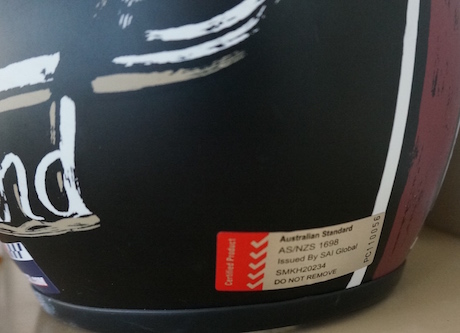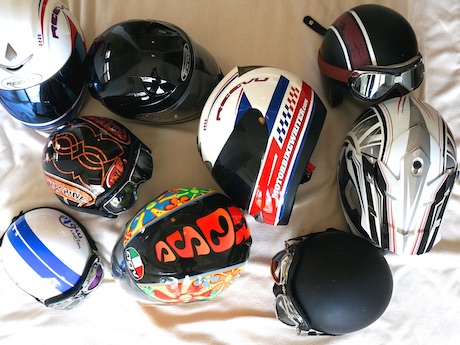Helmets that have been approved for Australian riders may be too heavy and stiff, causing more injuries than they prevent, according to one researcher.
Helmet law researcher Tim Kelly says the very rules that are designed to approve safe helmets are forcing us to wear helmets that are too heavy in the shell with liners that are too stiff and promote “basal skull fractures”.
He says the various accreditation tests performed on helmets such as a spear penetration and energy attention tests favour these types of helmets.
The tests are indeed strange, especially the spear test which involves placing the helmet on a “headform” (dummy head) then a steel spike “striker” (3kg and pointed) is raised 3m above the helmet and dropped. The helmet must ensure that there will be no contact between the striker and the headform at any point tested within a specified area.
Now how often does a spike drop on a rider’s head? Where’s the real-world relevance in that test?
He also notes that Australia doesn’t even have a crucial chin bar test for full-face helmets that is used overseas.

Tim claims that wearing an Australian-approved helmet does not offer riders “the best protection available in decreasing your risk of serious injury or fatality in the event of an accident”.
He has devoted some time to researching the issues and has presented his case on his website.
“I’ve spent the past several months studying this and the science is legit and world renowned,” he says.
“To be honest I really hope there are experts out there with data and research to prove me wrong, ‘cause if not, what have the people in charge been doing in the last 27 years?”
The Australian Standard (AS) 1698 was created in the 1974 and has been updated three times since, the most current version in 2006.
However, Tim points out that the latest version is not freely available to the public as the rights to these standards were sold to an international corporation and a fee is required to access the standard.
Australian Motorcycle Council Helmets Committee Chair Guy Stanford says the cost for all the relevant documents is $692.
Lawyers in a lengthy ongoing court case are using this as the basis of their argument against a fine for not wearing an approved helmet.
Meanwhile, the helmet standards are vague, to easy to misinterpret and perhaps unsafe.
A helmet summit earlier this year looked at making changes to the standards but so far only Queensland has gone ahead and accepted other well-known international standards, leaving us with helmet laws that vary from state to state.


